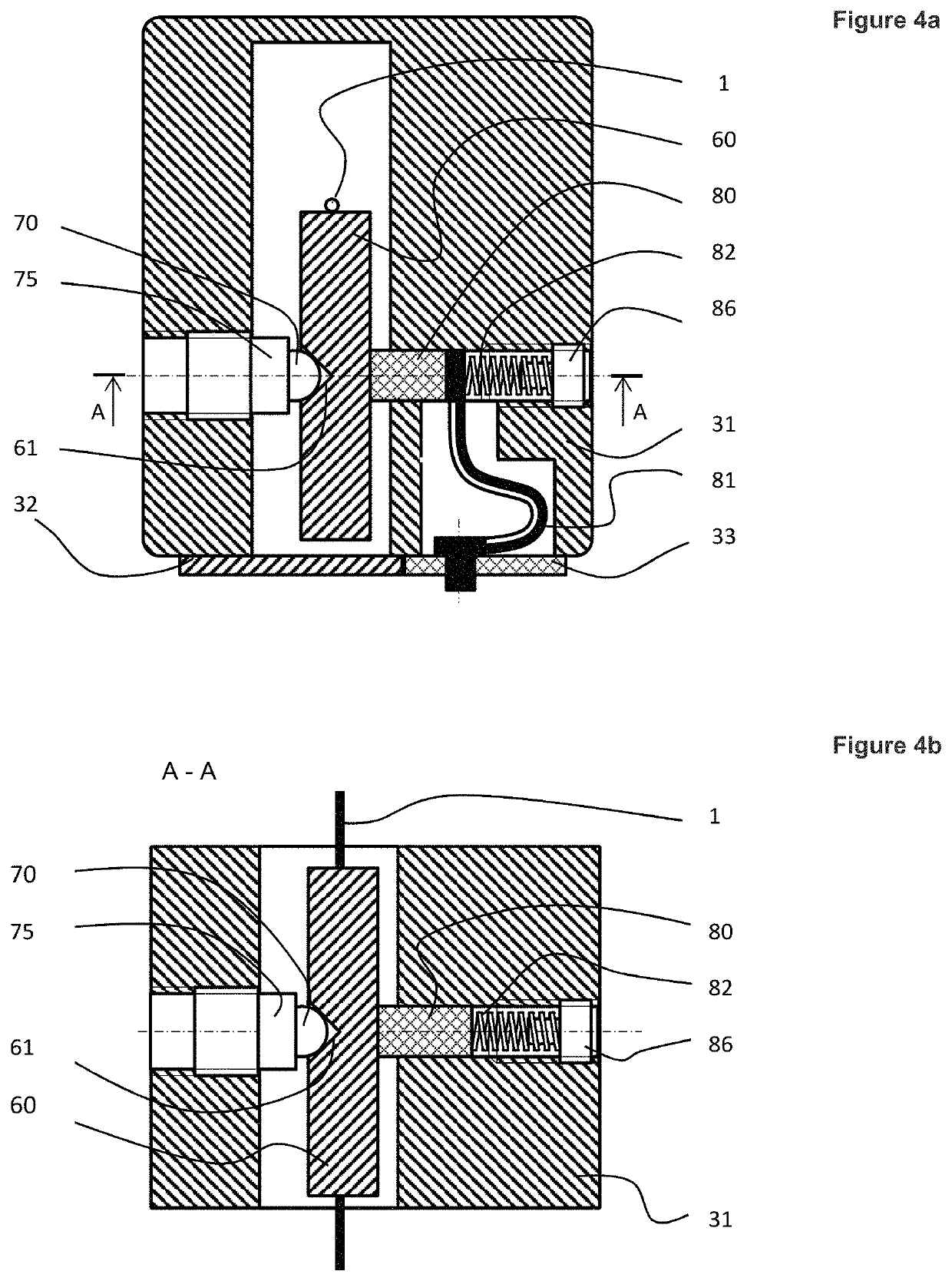Current feeding device for wire electrical discharge machining
a current feeding device and wire technology, applied in the direction of current collectors, electrical-based machining electrodes, manufacturing tools, etc., can solve the problems of wire becoming abrasive, the feeder is more prone to mechanical wear, and the overall life of the feeder is thus considerable, and achieves low friction, low wear, and small dimension
- Summary
- Abstract
- Description
- Claims
- Application Information
AI Technical Summary
Benefits of technology
Problems solved by technology
Method used
Image
Examples
Embodiment Construction
[0045]First, the relevant parts of a WEDM according to the present invention are described with reference to FIG. 1, in a very simplified representation. A workpiece 2 having a starting hole 3 is mounted on a stationary table 5 and fixed by means of a clamp 6. The tensioned wire electrode 1 is guided by means of an upper wire guiding head 20 and a lower wire guiding head 40. The upper and the lower wire guiding heads 20, 40 are moveable in parallel plans with respect to the stationary workpiece 2, by means of the U, V axis for the upper head 20, and by means of the X, Y axes for the lower head 40. The upper wire guiding head 20 is further moveable vertically. The upper and lower wire guiding heads comprise main wire guides 21, 41 which are arranged as close as possible to the workpiece. Further each head comprises a pair of pre-guides, that is, the pre-guides 22 and 23 in the upper head, and the pre-guides 42 and 43 in the lower head. Between the pair of pre-guides there is a rotary...
PUM
| Property | Measurement | Unit |
|---|---|---|
| diameter | aaaaa | aaaaa |
| diameter | aaaaa | aaaaa |
| aperture angle | aaaaa | aaaaa |
Abstract
Description
Claims
Application Information
 Login to View More
Login to View More - R&D
- Intellectual Property
- Life Sciences
- Materials
- Tech Scout
- Unparalleled Data Quality
- Higher Quality Content
- 60% Fewer Hallucinations
Browse by: Latest US Patents, China's latest patents, Technical Efficacy Thesaurus, Application Domain, Technology Topic, Popular Technical Reports.
© 2025 PatSnap. All rights reserved.Legal|Privacy policy|Modern Slavery Act Transparency Statement|Sitemap|About US| Contact US: help@patsnap.com



